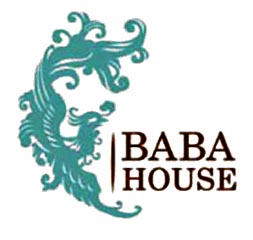- Baba House
Infobox Museum
name = Baba House
imagesize = 150px
caption =
map_type =
map_caption =
latitude =
longitude =
established = bda|2008|09|04
dissolved =
location = 157 Neil Road
(coord|1|16|37|N|103|15|14|E)Singapore
type =Peranakan Heritage
visitors =
director = Mrs Christine Khor
curator = Peter Lee
Jean Wee
publictransit =Outram Park MRT Station
(coord|1|16|50|N|103|50|22|E)Singapore
website =Baba House is a museum in Singapore, showcasing
Peranakan history, architecture and heritage. The museum is housed in a traditionalPeranakan pre-war house which formerly owned by 19th-century Singaporean shipping tycoonWee Bin . The House is also a sister museum of theNational University of Singapore (NUS) Museum and co-managed by the NUS Centre for the Arts.cite news|first=Suan Chiang|last=Tay|title=Peranakan Pride|publisher=Straits Times|date=2008-09-03]In April 2005, a S$4 million donation was made to the
National University of Singapore (NUS) by Ms Agnes Tan, the last surviving daughter of the founder of theMalaysian Chinese Association (MCA), the late TunTan Cheng Lock . This donation was given to the University to acquire Wee's traditional Peranakan house along Neil Road, built circa 1928 on the land plot bought by Wee Bin in 1860. The house is currently owned and managed by Mr Wee Lin, the sixth-generation descendant ofWee Bin .
Another donation of S$1.5 million was made to the University, for acquisition of two other shophouses along Jalan Tun Tan Cheng Lock inMalacca . These acquired houses will be restored and used for educating younger generations about Peranakan history, culture and architecture, while the two houses in Malacca to be used for study on conservation techniques of historical buildings. In gesture of appreciation for the donation, the University named the Singapore house as the "Tan Cheng Lock Baba House". [cite news|first=Sandra|last=Davie|title=Daughter of late businessman wants the young to learn the legacy|location=Singapore|publisher=Straits Times|date=2005-10-08]The House was officially opened by President of Singapore Mr
S R Nathan onSeptember 4 ,2008 as the "Baba House", and opened to the public onSeptember 15 ,2008 . Staff and students from NUS' School of Design and Architecture and the Faculty of Arts and Social Sciences' South-east Asia Studies Programme were involved in the restoration, which has elaborate and intricately carved wooden windows, doors and partition screens. About 70 per cent of the furniture in the House belonged to the Wee estate, while the rest of the items were acquired from Peranakan families in Singapore and Malacca. The first two storeys of the House showcase the Peranakan domestic interior, while artists showcase modern interpretations of Peranakan culture through the exhibition gallery on the third storey. At the same time, the House will also be a venue for Peranakan culinary and craft workshops to be organized by the NUS Museum.The Baba House served as a contrast to the
Peranakan Museum wing ofAsian Civilizations Museum , as the House enable visitors to experience more intimately how typical Peranakan homes looked and functioned in the 1920s, a time when there were big shifts in Peranakan family structures and their fortunes in Singapore. Its showcase of furniture and items encouraged visitors to interact and touch, and even book the venue to host events as part of the experience-making process.cite news|last=Shetty|first=Deepika|title=Telling Baba story differently|publisher=Straits Times|date=2008-09-04]Because of the limited space and the fragility of Peranakan wares, visits to the House are limited to small groups of 12 and by appointments only, so as to reduce impacts made in the House.
ee Also
Peranakan Museum References
Wikimedia Foundation. 2010.
